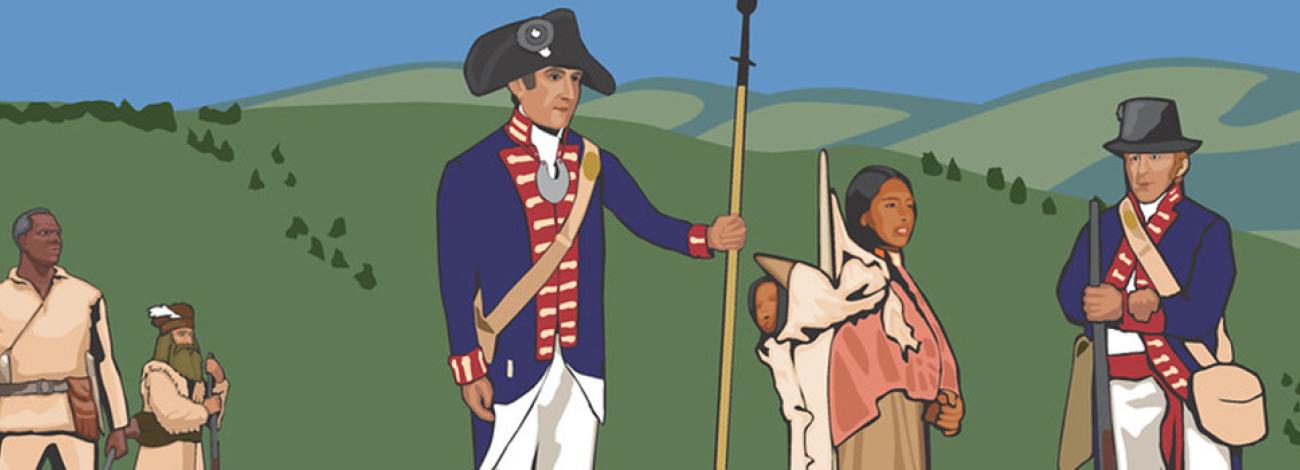
Captain William Clark and the Corps of Discovery
On July 25, 1806, Captain William Clark, Sacagawea, her 18-month-old son (nicknamed "Pompey"), and a crew of 11 men stopped near the rock outcropping on their return trip from the Pacific Coast. Clark carved his signature and the date into the rock. The historic inscription is one of the few remaining pieces of physical evidence still visible on the Lewis and Clark National Historic Trail.
In July 1806, on their return journey from the Pacific, the Lewis and Clark Expedition split into three groups to explore as much of the Missouri and Yellowstone river drainages as possible before returning to St. Louis. Clark’s party consisted of Sacagawea; her infant son, Jean Baptiste Charbonneau (nicknamed Pomp); her husband, Toussaint Charbonneau; Clark’s slave, York; Sergeant Pryor; seven privates, and 50 horses.
On July 15, 1806, Sacagawea identified and guided the party over Bozeman Pass, and into the Yellowstone River Valley. There, the group built canoes and proceeded down the Yellowstone River to the site of Pompeys Pillar. Clark called the river the Rochejhone, a French word that translates to Yellowstone. Several tribal names translate to Elk River. This water route would carry the party to the Missouri River to rendezvous with Lewis and finish their journey home. In contrast to the months of traveling slowly across the mountains and prairies on foot and horseback, they sped downstream on the Yellowstone, traveling up to 70 miles per day.
On July 25th, 1806, the group reached what Clark named "Pomp's Tower" in honor of Sacajawea’s infant son, Pomp. Clark described a “remarkable rock situated in an extensive bottom of the Stard Side of the river & 250 paces from it. this rock I ascended and from its top had a most extensive view in every direction. This rock which I shall call Pompy's Tower is 200 feet high and 400 paces in secumpherance and only excessable on one side which is from the N.E. the other parts of it being a perpendicular clift of lightish coloured gritty rock on the top there is a tolerable soil of about 5 or 6 feet thick covered with short grass.”
Clark noted piles of stone stacked of the feature and that "The nativs have ingraved on the face of this rock. The figures of animals &c near where I marked my name and the date of the month and year." Clark also wrote that he saw “immense herds of buffalo, elk, and wolves” from the top of the Pillar.
In addition to naming the rock, Clark named the nearby "Baptiste’s Creek" in honor of Sacajawea's son. The creek was later renamed "Pompey's Pillar Creek".
